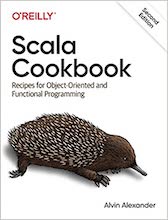What this is
This file is included in the DevDaily.com
"Java Source Code
Warehouse" project. The intent of this project is to help you "Learn
Java by Example" TM.
Other links
The source code
package org.apache.lucene.search;
/**
* Copyright 2004 The Apache Software Foundation
*
* Licensed under the Apache License, Version 2.0 (the "License");
* you may not use this file except in compliance with the License.
* You may obtain a copy of the License at
*
* http://www.apache.org/licenses/LICENSE-2.0
*
* Unless required by applicable law or agreed to in writing, software
* distributed under the License is distributed on an "AS IS" BASIS,
* WITHOUT WARRANTIES OR CONDITIONS OF ANY KIND, either express or implied.
* See the License for the specific language governing permissions and
* limitations under the License.
*/
import java.io.IOException;
import org.apache.lucene.index.IndexReader;
import org.apache.lucene.index.Term;
/** Subclass of FilteredTermEnum for enumerating all terms that are similiar to the specified filter term.
Term enumerations are always ordered by Term.compareTo(). Each term in
the enumeration is greater than all that precede it. */
public final class FuzzyTermEnum extends FilteredTermEnum {
double distance;
boolean fieldMatch = false;
boolean endEnum = false;
Term searchTerm = null;
String field = "";
String text = "";
int textlen;
public FuzzyTermEnum(IndexReader reader, Term term) throws IOException {
super();
searchTerm = term;
field = searchTerm.field();
text = searchTerm.text();
textlen = text.length();
setEnum(reader.terms(new Term(searchTerm.field(), "")));
}
/**
The termCompare method in FuzzyTermEnum uses Levenshtein distance to
calculate the distance between the given term and the comparing term.
*/
protected final boolean termCompare(Term term) {
if (field == term.field()) {
String target = term.text();
int targetlen = target.length();
int dist = editDistance(text, target, textlen, targetlen);
distance = 1 - ((double)dist / (double)Math.min(textlen, targetlen));
return (distance > FUZZY_THRESHOLD);
}
endEnum = true;
return false;
}
protected final float difference() {
return (float)((distance - FUZZY_THRESHOLD) * SCALE_FACTOR);
}
public final boolean endEnum() {
return endEnum;
}
/******************************
* Compute Levenshtein distance
******************************/
public static final double FUZZY_THRESHOLD = 0.5;
public static final double SCALE_FACTOR = 1.0f / (1.0f - FUZZY_THRESHOLD);
/**
Finds and returns the smallest of three integers
*/
private static final int min(int a, int b, int c) {
int t = (a < b) ? a : b;
return (t < c) ? t : c;
}
/**
* This static array saves us from the time required to create a new array
* everytime editDistance is called.
*/
private int e[][] = new int[1][1];
/**
Levenshtein distance also known as edit distance is a measure of similiarity
between two strings where the distance is measured as the number of character
deletions, insertions or substitutions required to transform one string to
the other string.
This method takes in four parameters; two strings and their respective
lengths to compute the Levenshtein distance between the two strings.
The result is returned as an integer.
*/
private final int editDistance(String s, String t, int n, int m) {
if (e.length <= n || e[0].length <= m) {
e = new int[Math.max(e.length, n+1)][Math.max(e[0].length, m+1)];
}
int d[][] = e; // matrix
int i; // iterates through s
int j; // iterates through t
char s_i; // ith character of s
if (n == 0) return m;
if (m == 0) return n;
// init matrix d
for (i = 0; i <= n; i++) d[i][0] = i;
for (j = 0; j <= m; j++) d[0][j] = j;
// start computing edit distance
for (i = 1; i <= n; i++) {
s_i = s.charAt(i - 1);
for (j = 1; j <= m; j++) {
if (s_i != t.charAt(j-1))
d[i][j] = min(d[i-1][j], d[i][j-1], d[i-1][j-1])+1;
else d[i][j] = min(d[i-1][j]+1, d[i][j-1]+1, d[i-1][j-1]);
}
}
// we got the result!
return d[n][m];
}
public void close() throws IOException {
super.close();
searchTerm = null;
field = null;
text = null;
}
}
|
 The search page
The search page Other source code files at this package level
Other source code files at this package level Click here to learn more about this project
Click here to learn more about this project
